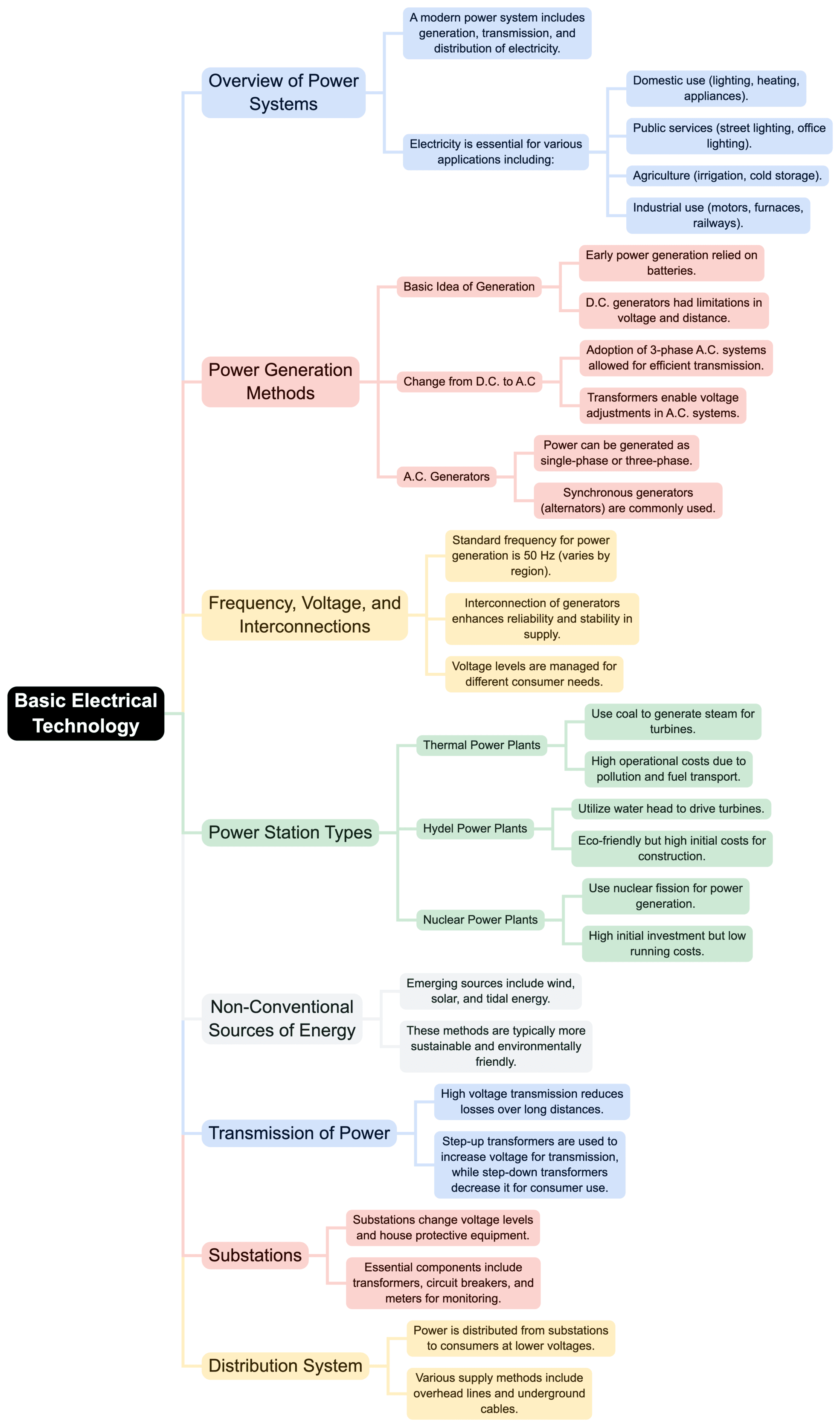Electrical Engineering (EE) Exam > Electrical Engineering (EE) Notes > Basic Electrical Technology > Mind Map: Basic Electrical Technology
Mind Map: Basic Electrical Technology | Basic Electrical Technology - Electrical Engineering (EE) PDF Download

The document Mind Map: Basic Electrical Technology | Basic Electrical Technology - Electrical Engineering (EE) is a part of the Electrical Engineering (EE) Course Basic Electrical Technology.
All you need of Electrical Engineering (EE) at this link: Electrical Engineering (EE)
|
75 docs|62 tests
|
FAQs on Mind Map: Basic Electrical Technology - Basic Electrical Technology - Electrical Engineering (EE)
| 1. What are the fundamental principles of electrical technology? |  |
Ans. The fundamental principles of electrical technology include Ohm's Law, which relates voltage, current, and resistance; Kirchhoff's laws, which deal with current and voltage in circuits; the concept of power, which is the rate of energy consumption; and the basics of alternating and direct current. These principles form the foundation for understanding electrical circuits and systems.
| 2. How do resistors, capacitors, and inductors function in electrical circuits? |  |
Ans. Resistors limit the flow of electric current and are used to control voltage levels in circuits. Capacitors store electrical energy temporarily and release it when needed, affecting the timing and filtering of signals. Inductors store energy in a magnetic field when electrical current passes through them and are used in applications such as transformers and filters to manage current flow and frequency response.
| 3. What safety precautions should be observed when working with electrical systems? |  |
Ans. Safety precautions include wearing appropriate personal protective equipment (PPE), ensuring that circuits are de-energized before working on them, using insulated tools, maintaining a safe distance from live wires, and following proper lockout/tagout procedures to prevent accidental energization. Additionally, understanding the risks associated with electrical shock and fire hazards is crucial.
| 4. What is the significance of AC and DC in electrical engineering? |  |
Ans. AC (alternating current) and DC (direct current) are two types of electrical current. AC is characterized by the periodic reversal of direction and is used for power distribution due to its efficiency over long distances. DC flows in one direction and is commonly used in batteries and electronic devices. Understanding the differences between AC and DC is essential for selecting the appropriate power source for various applications.
| 5. How do electrical components like switches and fuses contribute to circuit functionality? |  |
Ans. Switches are used to control the flow of electricity in a circuit, allowing users to turn devices on or off. Fuses protect circuits from overloads by breaking the circuit when the current exceeds a certain level, preventing damage to the electrical components. Both components are critical for ensuring safety and proper operation in electrical systems.
Related Searches
















